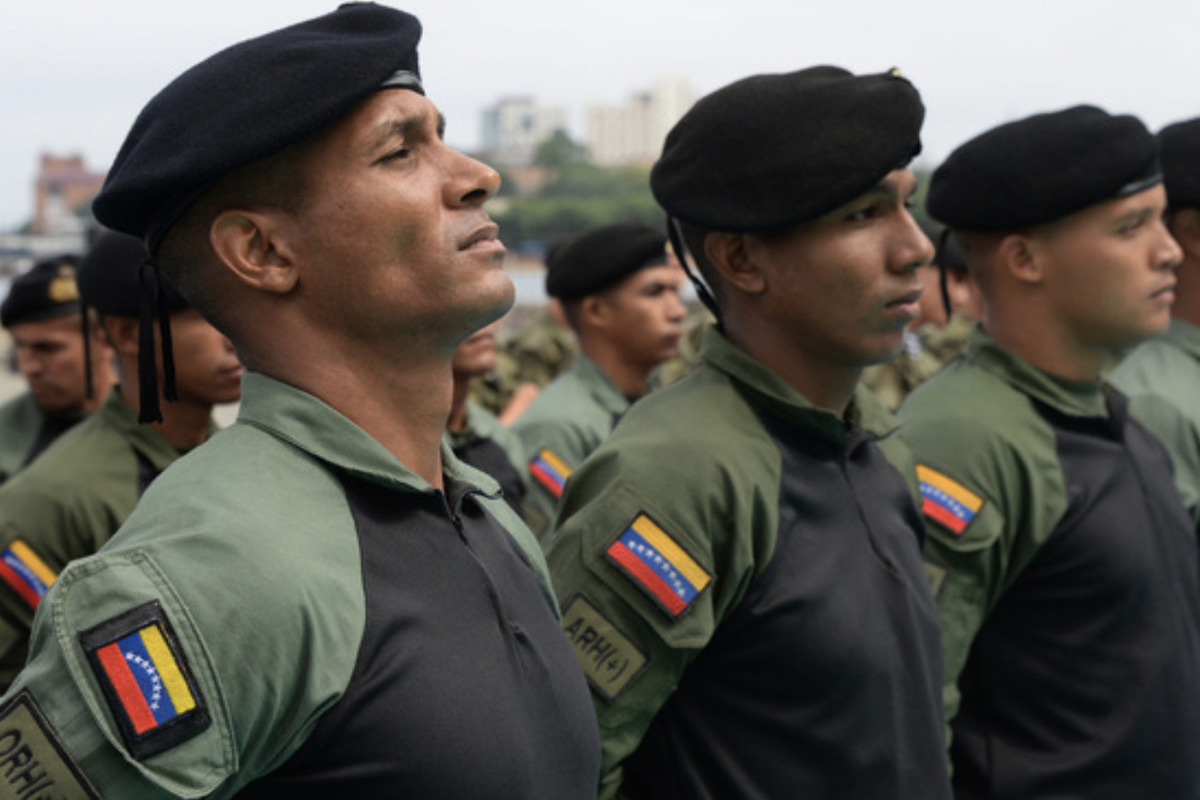A concentration of troops was noticed on the Venezuela-Guyana border: there was a smell of war
[ad_1]

Venezuela is building up troops on the border with Guyana, Western media report, citing satellite images. Aerial data suggests President Nicolas Maduro has been increasing his claims to the disputed, oil-rich Essequibo region for months.
Venezuela is expanding military bases near its border with Guyana and moving troops to its jungle border as President Nicolas Maduro escalates his threats to annex the country’s oil-rich neighbor, satellite images show.
Images taken from space in January showed expanding operations at the Venezuelan military base on Anacoco Island in Venezuela, on the Cuyuni River that borders Guyana, with several new areas of rainforest recently cleared and others being bulldozed when the images were taken.
The photographs, CNN notes, also show new infrastructure and several armored vehicles present at the base. Although the base’s runway appeared unchanged, a helicopter could be seen on it, and the access roads had been improved.
To the north of the base, at the Cuyuni River crossing that provides land access to the base, a heavy river ferry is visible and large areas of rainforest have been cleared. Large stockpiles of what appear to be construction materials, as well as three armored vehicles, are visible on the side of the road.
Venezuelan President Nicolas Maduro promised at mediation talks in December not to take military action against his neighbor, but images released by the Center for Strategic and International Studies (CSIS) in Washington show a build-up of forces on the borders with Guyana.
Christopher Hernandez-Roy, deputy director of the US CSIS program, states: “On the same day that the Venezuelan Foreign Minister meets with Guyanese diplomats, the Venezuelan military is conducting a tank exercise just a stone’s throw from Guyana. All this tells us that Maduro is pursuing a two-faced policy.”
Venezuela has long laid claim to the resource-rich Essequibo region, which makes up two-thirds of Guyana, but in recent months Maduro has strengthened the country’s claims to the disputed territory.
After months of campaigning, the country held a vote in December in which Maduro said the Venezuelan people supported the country’s decision to seize a vast swath of jungle by force.
Aerial images show that while Venezuelan diplomats subsequently met with their Guyanese counterparts to calm rising tensions in the region, the Venezuelan military sent tanks and patrol boats equipped with missiles to the border.
“This escalatory behavior on the part of Venezuela creates opportunities for miscalculation and loss of control over events on the ground,” CSIS warned in its report on the escalating dispute.
The dispute is being considered at the UN International Court of Justice in The Hague, but Maduro wants to ignore the UN court and negotiate directly with Guyana, The Guardian writes.
Analysts saw Maduro’s sabre-rattling as a way to drum up support ahead of elections expected this year, but suggested it could also be an attempt to pressure Guyana to share profits from recent oil discoveries.
Venezuela’s economy has suffered greatly over the past decade, despite having some of the largest deposits in the world, The Guardian notes.
“What this all suggests is that Maduro may have had internal reasons for what he was doing initially, but now the strategy is to force some concessions from the Guyanese,” Hernandez-Roy comments.
Brazil this week moved more troops to its borders with Guyana and Venezuela amid rising regional tensions, while the United States agreed to bolster Guyana’s defenses with new planes, helicopters, military drones and radar technology.
Guyanese officials are due to meet with heads of the Caricom political union to discuss their response to their Caribbean allies.
[ad_2]
Source link








